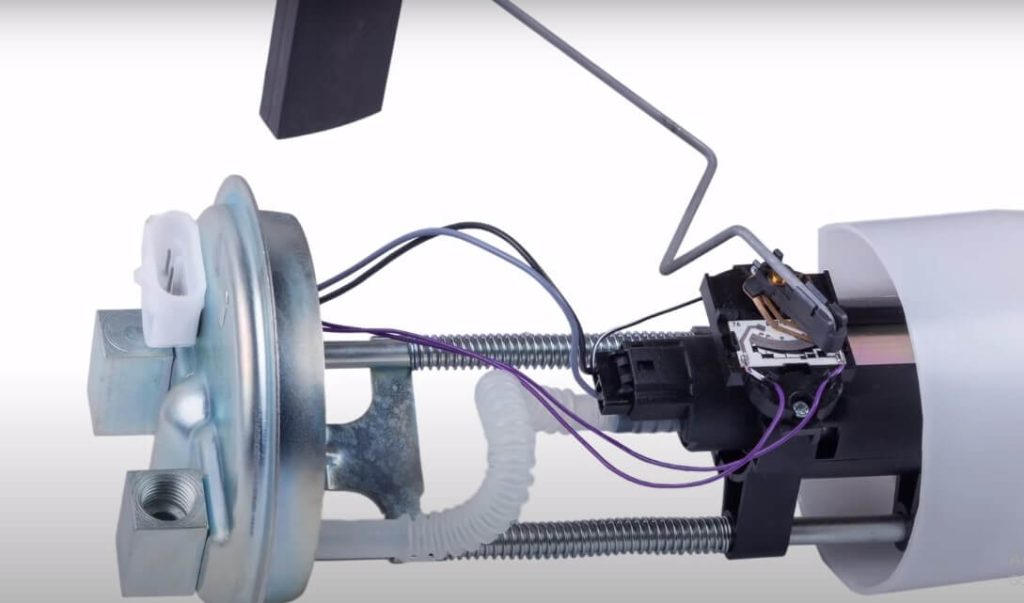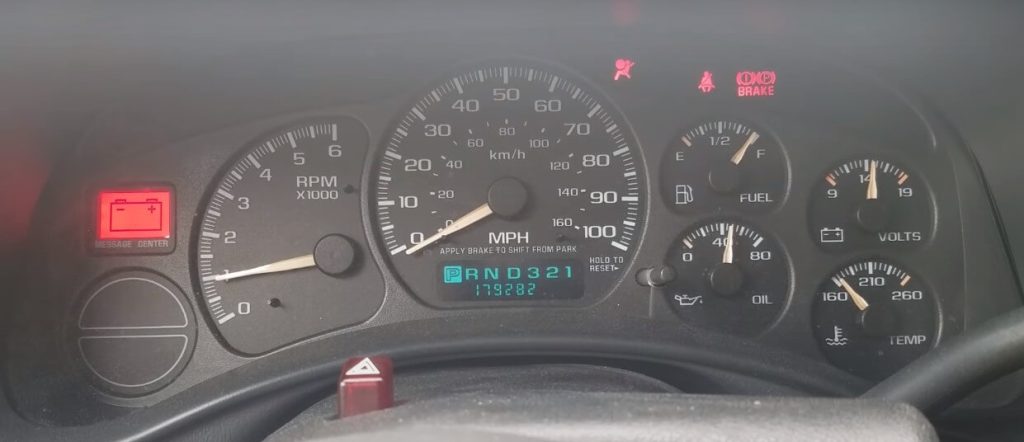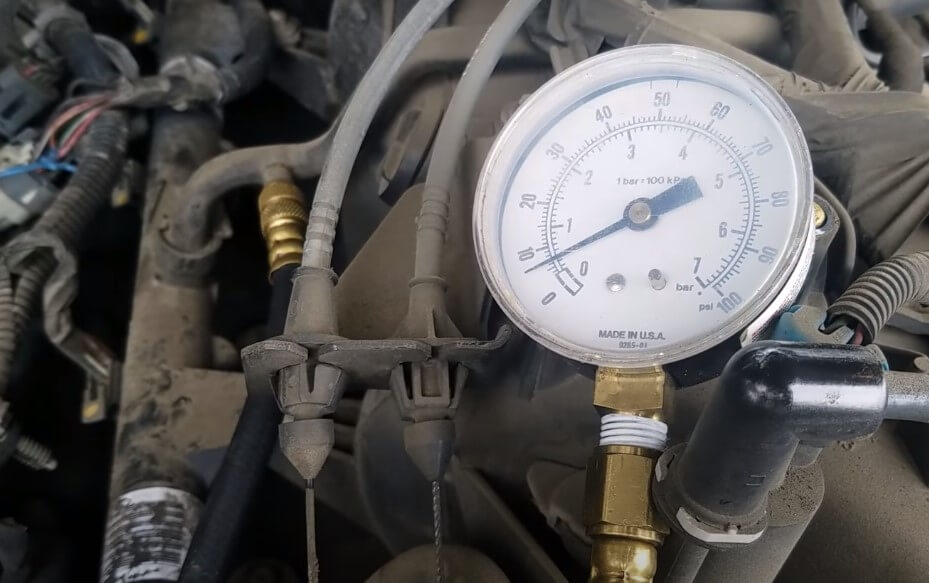A car that cranks but refuses to start can be a nerve-wracking experience. One potential culprit is a malfunctioning fuel pump, the heart of your car’s fuel delivery system. However, before you dive into manually manipulating the fuel pump, it’s crucial to understand that there is no safe or recommended way to do so in most modern vehicles.
This article will explain why manually turning on the fuel pump isn’t a viable solution and guide you through a safer and more effective troubleshooting process to get your car back on the road.

Why Can’t You Manually Turn on the Fuel Pump?
Modern fuel pumps are electronically controlled. They rely on a complex interplay between the engine control unit (ECU), sensors, and relays to activate at specific times and deliver the precise amount of fuel pressure. Bypassing this system can be dangerous and lead to several problems:
- Fire Hazard: Gasoline is highly flammable, and tampering with the fuel system increases the risk of sparks or leaks, igniting a fire.
- Engine Damage: An improperly functioning fuel pump can deliver too much or too little fuel, damaging the engine.
- Electrical Issues: Messing with electrical components without proper knowledge can lead to blown fuses, fried sensors, and further complications.
Diagnosing a Fuel Pump Problem
If your car cranks but won’t start, here are some safer steps to diagnose a potential fuel pump issue:
- Listen for the Pump: When you turn the key to the “on” position (without cranking the engine), you should hear a whirring sound for a few seconds. This indicates the fuel pump is priming the system. If you hear no sound, it could be a sign of a faulty pump.
- Check the Fuse Box: Modern vehicles often have a dedicated fuse for the fuel pump. Locate your car’s fuse box (refer to the owner’s manual) and identify the fuel pump fuse. Check if it’s blown. A blown fuse is a relatively easy fix; simply replace it with a fuse of the same amperage rating.

- Fuel Level Check: This might seem obvious, but a surprisingly common reason for a car not starting is an empty fuel tank. Pull over safely and check your fuel gauge or take a peek into the gas tank.

- Fuel Pressure Test: If the above steps don’t solve the issue, consider a fuel pressure test. This involves connecting a pressure gauge to the fuel rail and checking if the pump delivers the pressure specified in your car’s manual. This test requires specialized tools and might be best left to a mechanic.

When to Call a Mechanic
If your troubleshooting efforts haven’t identified the problem, or if you’re uncomfortable performing any of these steps, it’s best to call a qualified mechanic. They have the expertise and tools to diagnose the issue accurately and recommend the proper repair, whether it’s replacing the fuel pump, a faulty sensor, or another component.
Preventing Fuel Pump Problems: Keep Your Engine Running Smoothly
While a failing fuel pump can leave you stranded, the good news is there are proactive steps you can take to minimize the risk and extend its lifespan. Here are some key strategies for preventing fuel pump problems:
Fuel Quality Matters:
- Use high-quality fuel: Contaminants and impurities in low-grade gasoline can damage the fuel pump and clog its internal filter. Sticking to reputable gas stations and opting for top-tier fuel with added detergents can help keep your fuel system clean and the pump functioning optimally.
- Avoid running on low fuel: Letting your fuel tank run close to empty can increase the concentration of contaminants that settle at the bottom of the tank. These contaminants can be drawn into the fuel pump, accelerating wear and tear. Aim to maintain at least a quarter tank of fuel whenever possible.
Preventative Maintenance is Key:
- Regular maintenance schedule: Follow your car’s recommended maintenance schedule as outlined in the owner’s manual. This often includes replacing the fuel filter at specific intervals. A clogged fuel filter can restrict fuel flow and put additional strain on the pump.
- Fuel system cleaning: Consider occasional professional fuel system cleaning services, especially if you suspect low-quality fuel use or experience performance issues. These cleanings can remove accumulated debris and ensure smooth fuel flow.
Driving Habits Can Make a Difference:
- Avoid overheating: Extreme engine temperatures can stress various components, including the fuel pump. Ensure your cooling system functions properly and address any overheating concerns promptly.
- Don’t overload your vehicle: Excessively overloading your car puts a strain on the engine and fuel system. By staying within the recommended weight limits, you can lessen the burden on the fuel pump.
Early Detection is Crucial:
- Pay attention to warning signs: Be mindful of the symptoms mentioned earlier, such as engine hesitation, stalling, or unusual noises from the fuel tank. Early detection and addressing potential issues can prevent minor problems from snowballing into a costly fuel pump failure.
Beyond Prevention:
- Consider extended warranty: If your car is still under warranty, explore the option of extending the coverage to potentially include the fuel pump. This can provide financial protection in case of a pump failure.
- Invest in a fuel pump relay bypass kit (advanced users only): For very experienced DIY enthusiasts, a fuel pump relay bypass kit can be a preventative measure. This kit allows for a temporary bypass of the fuel pump relay in case of a failure, potentially helping you limp the car to a mechanic. However, improper installation or use of this kit can be risky and is not recommended for most drivers.
By implementing these preventative measures, you can significantly reduce the risk of fuel pump problems and keep your car running smoothly for miles to come. Remember, a little proactive effort can save you from a roadside breakdown and a potentially hefty repair bill.
Additional Tips:
- Preventative Maintenance: Regularly scheduled maintenance and using high-quality fuel can help extend the lifespan of your fuel pump.
- Warning Signs: Pay attention to signs that your fuel pump might be failing, such as hesitation during acceleration, stalling, or difficulty starting the engine. Addressing these issues early can prevent a complete breakdown.
While a tempting solution in a pinch, manually turning on the fuel pump is not a recommended approach for modern vehicles. By following these steps and seeking professional help when needed, you can diagnose the problem safely and get your car back on the road as quickly as possible.
Leave a Reply